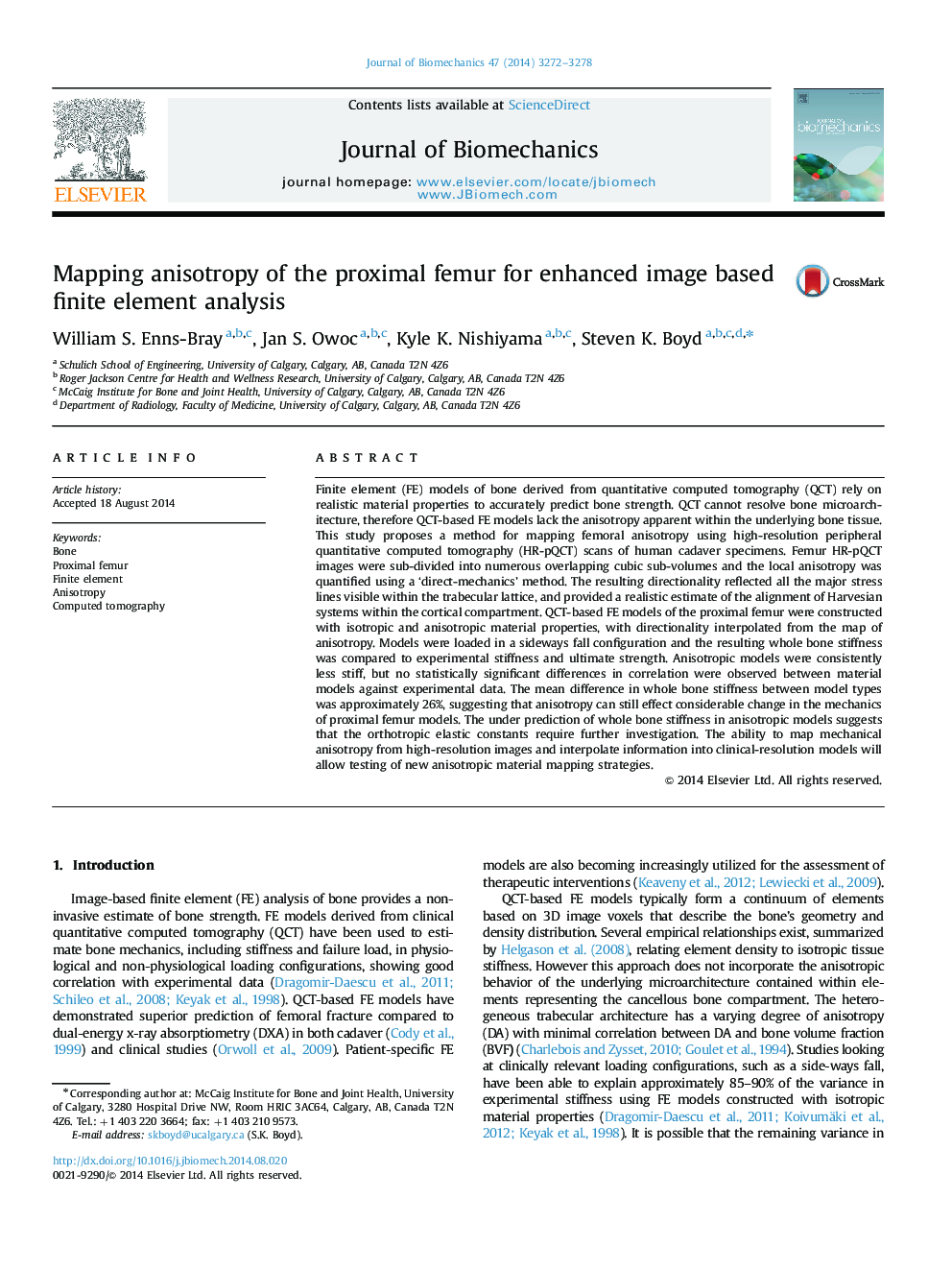| کد مقاله | کد نشریه | سال انتشار | مقاله انگلیسی | نسخه تمام متن |
|---|---|---|---|---|
| 10431920 | 910231 | 2014 | 7 صفحه PDF | دانلود رایگان |
عنوان انگلیسی مقاله ISI
Mapping anisotropy of the proximal femur for enhanced image based finite element analysis
ترجمه فارسی عنوان
تجزیه و تحلیل ناهمسانگردی پروگزیمال فک بالا برای تحلیل تصویر بر پایه تصویر بر پایه
دانلود مقاله + سفارش ترجمه
دانلود مقاله ISI انگلیسی
رایگان برای ایرانیان
کلمات کلیدی
استخوان پروگزیمال فمور، المان محدود، ناهمسانگردی، توموگرافی کامپیوتری،
موضوعات مرتبط
مهندسی و علوم پایه
سایر رشته های مهندسی
مهندسی پزشکی
چکیده انگلیسی
Finite element (FE) models of bone derived from quantitative computed tomography (QCT) rely on realistic material properties to accurately predict bone strength. QCT cannot resolve bone microarchitecture, therefore QCT-based FE models lack the anisotropy apparent within the underlying bone tissue. This study proposes a method for mapping femoral anisotropy using high-resolution peripheral quantitative computed tomography (HR-pQCT) scans of human cadaver specimens. Femur HR-pQCT images were sub-divided into numerous overlapping cubic sub-volumes and the local anisotropy was quantified using a 'direct-mechanics' method. The resulting directionality reflected all the major stress lines visible within the trabecular lattice, and provided a realistic estimate of the alignment of Harvesian systems within the cortical compartment. QCT-based FE models of the proximal femur were constructed with isotropic and anisotropic material properties, with directionality interpolated from the map of anisotropy. Models were loaded in a sideways fall configuration and the resulting whole bone stiffness was compared to experimental stiffness and ultimate strength. Anisotropic models were consistently less stiff, but no statistically significant differences in correlation were observed between material models against experimental data. The mean difference in whole bone stiffness between model types was approximately 26%, suggesting that anisotropy can still effect considerable change in the mechanics of proximal femur models. The under prediction of whole bone stiffness in anisotropic models suggests that the orthotropic elastic constants require further investigation. The ability to map mechanical anisotropy from high-resolution images and interpolate information into clinical-resolution models will allow testing of new anisotropic material mapping strategies.
ناشر
Database: Elsevier - ScienceDirect (ساینس دایرکت)
Journal: Journal of Biomechanics - Volume 47, Issue 13, 17 October 2014, Pages 3272-3278
Journal: Journal of Biomechanics - Volume 47, Issue 13, 17 October 2014, Pages 3272-3278
نویسندگان
William S. Enns-Bray, Jan S. Owoc, Kyle K. Nishiyama, Steven K. Boyd,
